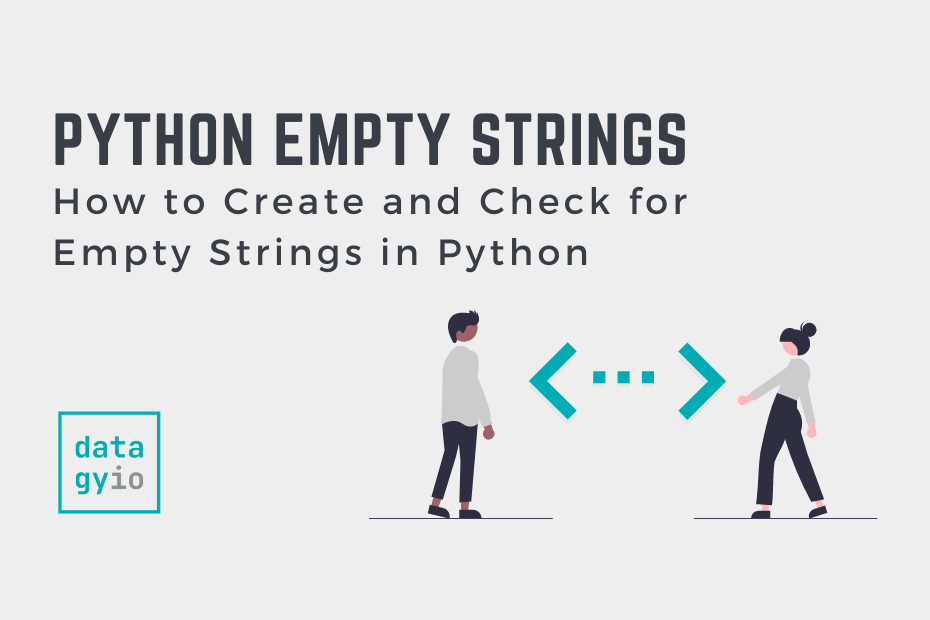In this tutorial, you’ll learn how to use Python to check if a string is empty or not. Being able to work with strings and see whether or not they are empty is an important skill to learn. Python strings are immutable, meaning that they cannot be changed once they’re created. Because of this, it can be useful to check if a string is empty or not.
By the end of this tutorial, you’ll have learned:
- What is considered an empty string in Python
- How to use the
notkeyword to check if a string is empty - How to check if a string is empty based on its length
Table of Contents
How to Create an Empty String in Python
In Python, you can create an empty string in a number of ways. The simplest, and clearest, way is simply to create a string with nothing in it. This can be done using either single, double, or triple quotes. Let’s see what this looks like:
# Creating an Empty String in Python
empty1 = ''
empty2 = ""
empty3 = """"""Similarly, we can use the string constructor function str() to create an empty string in Python. Let’s see what this looks like and print it out:
# Creating an Empty String in Python
empty = str()
print(empty)
# Returns
#Are Strings of Spaces Considered Empty in Python?
In the examples above, the strings were truly empty. Now, take a string like this for example:
# Is this empty?
empty = ' 'Would we consider this empty? Well, it depends. From a technical perspective, the string isn’t empty. From a practical perspective, the string is empty. To get semantics out of the way, let’s consider a string that’s made up entirely of spaces or whitespace to be “blank”.
Use not To Check if a String is Empty in Python
The simplest, and most Pythonic, way of checking if a string is empty in Python is to simply use an if-else block with the not keyword. Empty strings in Python are considered to be falsy, meaning that they evaluate to False.
Because of this, we can easily check if a string is empty by checking its boolean truth:
# Checking if a String is Empty in Python
string = ''
print(not string)
# Returns: TrueWhat this expression evaluates to is not False, which then evaluates to True.
A cleaner, and more practical way to write this, is using an if-else block. With this we can run an expression when a string is empty or not:
# Checking if a String is Empty with an if-else
string = ''
if not string:
print("Empty string!")
else:
print("Not empty string!")
# Returns:
# Empty string!In the next section, you’ll learn how to check if a string is empty using the len() function.
Use len to Check if a String in Empty in Python
Because empty strings in Python are, well, empty, you can also check the length of a string to see if it’s empty or not. This is done using the len() function, which returns the length of an iterable object passed into it.
Let’s see how we can use this function to check if a string is empty or not:
# Using len() To Check if a String is Empty
string = ''
if len(string) == 0:
print("Empty string!")
else:
print("Not empty string!")
# Returns
# Empty string!Keep in mind that this only checks if a string is truly empty. In the following section, you’ll learn how to check if a string is either empty or blank.
Use strip to Check if a String is Blank in Python
In this section, you’ll learn how to check if a string is both empty as well as blank, meaning that it only contains whitespace. In order to do this, we first need to apply the .strip() method to the string, which returns a string without any whitespace. We can then use either not keyword or the len() function to check if it’s empty.
Let’s see what this looks like. We’ll create a string that contains a few spaces and combine the .strip() method with the not keyword:
# Checking if a String is Blank in Python
string = ' '
if not string.strip():
print("Blank string!")
else:
print("Not blank string!")
# Returns
# Blank string!Note that because strings in Python are immutable, the original string will not be modified.
Conclusion
In this tutorial, you learned how to use Python to check if a string is empty or blank. You first learned how to create an empty string in Python, using either direct assignment or the string constructor. Then, you learned how to check if a string was empty using the not keyword and the len() function. Following this, you learned how to work with blank strings, meaning strings that only contain whitespace.
Additional Resources
To learn more about related topics, check out the tutorials below:

